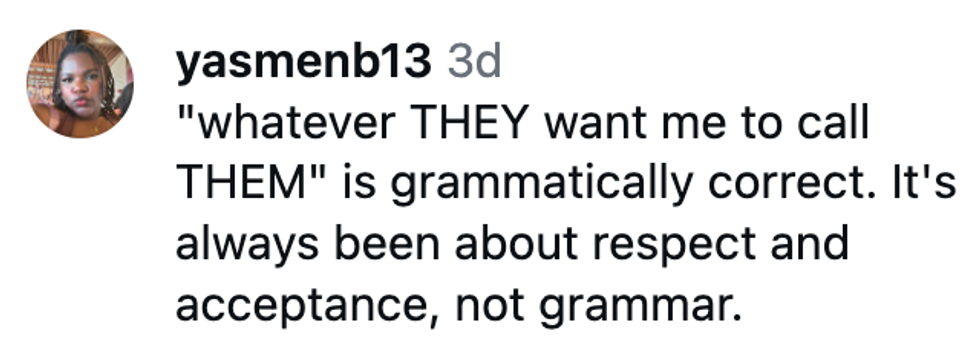A school district in Alameda, California, is challenging a traditional school policy that typically targets female students and students of color.
Alameda city schools lifted their previously strict dress code policy in response to female students' complaints of feeling shamed for their bodies and held responsible for male behavior.
After the school board reviewed the policy changes over the summer, students will now have the freedom to express themselves however they want as long as they wear a top, bottom and shoes.
Steven Fong, the Alameda Unified School District's Chief Academic Officer, hopes the new policy will bring the focus back to education.
"We believe these changes will reduce inequitable and unnecessary discipline and help us maximize learning time."
However some in the media, like NBC reporter Melissa Colorado, asked Alameda parents to contemplate only the perceived negative extremes like tube tops.
But shouldn't each parent be deciding what their own child wears already?
Shopping for school clothes and approving the outfits their child leaves the house wearing is part of family life for most parents. Why should another parent or a school board take that decision away from them?
The new Alameda Unified School District policy states that students can wear hoodies as long as they do not cover the face and even comfy yoga pants.
The remaining restriction being students must wear:
"clothing that covers specific body parts (genitals, buttocks, and areolae/nipples) with opaque material."
The most common reason given for dress codes that target females is female body parts "distract their male classmates" and "prohibit learning."
The majority of school dress codes around the United States require females to hide not only any glimpse of their thighs, shoulders, back, waist, collarbones or chest because those areas of the female body "are distracting", but also to hide the shape of some areas of their bodies as well.
The required hiding of the female form leads to some of the more controversial decisions going viral on social media over what is and is not appropriate; decisions often made by an adult male administrator or teacher regarding an underage female student.
A school in Texas recently made the news for targeting only females in their informational video to teach students about their dress code.
The policy revamp describes what type of dress is permissible, including articles of clothing that frequently end up at the center of controversy for policing female students on their appearance, or rather males reactions to it, as well as clothing associated with certain ethnic, racial or religious identities.
"Students can wear:
hats including religious headwear; hoodie sweatshirts (overhead is allowed); fitted pants including leggings, yoga pants and "skinny jeans"; sweatpants; shorts; skirts; dresses; pants; midriff-baring shirts; pajamas; ripped jeans as long as underwear is not exposed; tank tops including spaghetti straps; halter tops and "tube" (strapless) tops."
An example of students protesting strict appearance guidelines unfairly targeting specific racial or ethnic demographics happened early this summer.
According to Teen Vogue police were involved when a Black student from Apache Junction High School in Arizona refused to remove his bandana when White students were not asked to remove theirs.
The new Alameda dress code will be on a trial run for a year and is considered to be the Bay Area's most accommodating for students and parents to decide on what is acceptable for each family.
Margo Dunlap has two daughters attending schools in the district, one in elementary school and the other in middle school.
She is all for the updated policy and sees a positive impact on students in general.
"There's an opportunity to listen to the young people. They're dressing in a way that's comfortable for them."




























 replying to @elonmusk/X
replying to @elonmusk/X replying to @elonmusk/X
replying to @elonmusk/X replying to @elonmusk/X
replying to @elonmusk/X replying to @elonmusk/X
replying to @elonmusk/X
 Barry Manilow/Facebook
Barry Manilow/Facebook Barry Manilow/Facebook
Barry Manilow/Facebook Barry Manilow/Facebook
Barry Manilow/Facebook Barry Manilow/Facebook
Barry Manilow/Facebook Barry Manilow/Facebook
Barry Manilow/Facebook Barry Manilow/Facebook
Barry Manilow/Facebook Barry Manilow/Facebook
Barry Manilow/Facebook Barry Manilow/Facebook
Barry Manilow/Facebook Barry Manilow/Facebook
Barry Manilow/Facebook Barry Manilow/Facebook
Barry Manilow/Facebook Barry Manilow/Facebook
Barry Manilow/Facebook